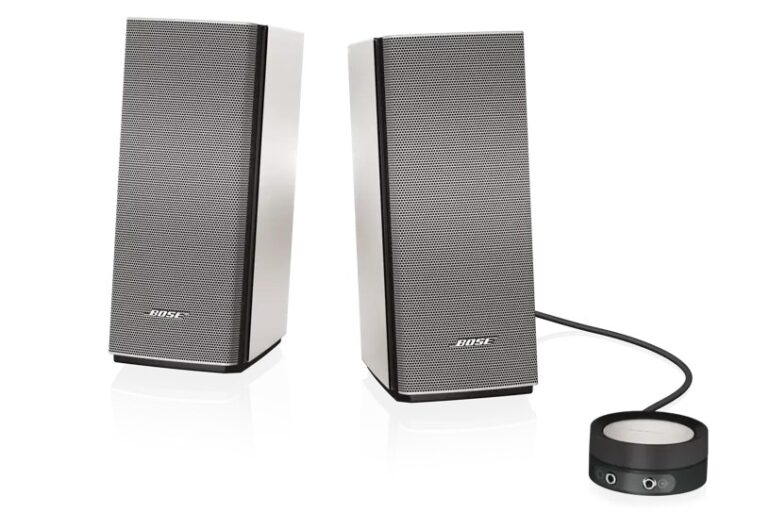In the ever-expanding universe of smart home technology, the smart speaker has evolved from a novel gadget into the central hub of the connected household. It’s the voice-activated butler, the on-demand DJ, and the all-knowing oracle for daily curiosities. At the forefront of this revolution is Google, whose line of Nest speakers—powered by the formidable Google Assistant—presents a compelling vision for the future of ambient computing. This review moves beyond a surface-level glance, offering a comprehensive deep dive into the Google Nest ecosystem, from the compact Nest Mini to the room-filling Nest Audio and the visually-enhanced Nest Hub.
We will dissect their audio performance, explore the depths of their software intelligence, and weigh their design and usability against the critical backdrop of user privacy. Furthermore, we’ll touch upon the intricate world of Software Debugging that underpins this seamless user experience. From the Backend Debugging required to process voice commands in the cloud to the Frontend Debugging necessary for the Nest Hub’s interface, a stable product relies on countless hours of development and refinement. This is a world where understanding Error Messages and analyzing Stack Traces is paramount, ensuring that when you ask for the weather, you don’t get a frustrating silence. Join us as we explore whether Google’s speakers truly deliver on their promise of a smarter, more helpful home.
The Google Nest Ecosystem: A Speaker for Every Room and Need
Google’s strategy isn’t about a single, one-size-fits-all device. Instead, it has cultivated an ecosystem of products designed to work in harmony, placing the Google Assistant within earshot no matter where you are in your home. This approach allows users to start small and expand, creating a cohesive network of interconnected devices. The success of this multi-device strategy hinges on robust software and flawless connectivity, an area where continuous Integration Debugging and Network Debugging are crucial for Google’s engineering teams.
Nest Mini: The Compact Contender
The Nest Mini is the entry point into Google’s smart speaker world. Small, unassuming, and covered in a soft fabric made from recycled materials, it’s designed to blend into any environment. It can be placed on a bookshelf, a nightstand, or even mounted on a wall. Its primary function is to serve as an access point to the Google Assistant. It’s perfect for setting timers in the kitchen, checking morning traffic from the bedroom, or controlling smart lights in the hallway. While its 40mm driver won’t satisfy audiophiles, it’s surprisingly clear and loud enough for podcasts, news briefings, and Assistant responses. Think of it as a utility device—a powerful node in your smart home network rather than a dedicated music machine.
Nest Audio: The All-Rounder and Music Powerhouse
For those who prioritize sound quality, the Nest Audio is the flagship of the lineup. It represents a significant leap forward from its predecessor, the original Google Home. Inside its pillow-like fabric enclosure sits a 75mm woofer and a 19mm tweeter, a combination that delivers a much richer and more balanced sound profile. The bass is present without being overwhelming, the mids are clear and forward (great for vocals), and the highs are crisp. Google also touts its “Media EQ” and “Ambient IQ” features, which automatically adjust the tuning based on the content being played and the ambient noise level in the room—a simple form of real-time Dynamic Analysis to enhance the listening experience. Two Nest Audio speakers can be paired for a true stereo setup, creating an impressively wide and immersive soundstage for a fraction of the cost of traditional high-end audio systems.
Nest Hub & Hub Max: The Visual Assistant
The Nest Hub and its larger, camera-equipped sibling, the Hub Max, add a crucial dimension to the smart assistant experience: a screen. This transforms the device from a purely auditory tool into a versatile smart display. In the kitchen, it can display step-by-step recipe instructions. On a desk, it acts as a digital photo frame seamlessly integrated with Google Photos. As a smart home dashboard, it provides at-a-glance touch controls for all your connected devices. The Hub Max adds a camera for Google Duo video calls and doubles as a Nest security camera. The development of these devices requires sophisticated Full Stack Debugging, ensuring both the visual interface (frontend) and the Assistant’s data processing (backend) work in perfect sync. Any lag or unresponsiveness would ruin the user experience, highlighting the importance of Debug Performance during the JavaScript Development lifecycle for these UIs.

The Brains of the Operation: Google Assistant and Software Integration
A speaker is just a speaker without the intelligence that powers it. Here, Google’s deep roots in search, AI, and natural language processing give it a distinct advantage. The Google Assistant is arguably the most conversational and context-aware of the major voice assistants, making interactions feel more natural and less robotic. This sophistication, however, introduces immense complexity, demanding some of the most advanced Debugging Techniques in the industry.
Voice Recognition and Smart Home Control
Google Assistant’s ability to understand complex queries and follow-up questions is remarkable. Features like “Voice Match” allow it to distinguish between different users, providing personalized calendar events, playlists, and reminders. The “Continued Conversation” feature lets you ask a series of questions without repeating the “Hey Google” wake word each time.
When it comes to smart home control, the ecosystem is vast. Setting up routines, such as a “Good Morning” routine that turns on the lights, reads the news, and starts the coffee maker, is simple through the Google Home app. However, when a routine fails, it can be a source of immense frustration. For the developers of third-party devices and services, this is where rigorous API Debugging comes into play. A single malformed API response can cause a command to fail, necessitating careful Error Tracking and analysis of server logs to resolve the issue. This process is a core part of modern Web Development Tools and practices.
The Developer Angle: Extending Functionality with Actions
The true power of the platform is unlocked through “Actions on Google,” which are third-party apps and services that integrate with the Assistant. This is where developers can build custom voice experiences. The development process involves using tools like the Actions SDK and Dialogflow for creating conversational flows. This is a specialized area of Node.js Development and Python Development, where developers must master Async Debugging to handle user requests without blocking the main thread.
A developer building an Action must engage in extensive Testing and Debugging. They use the Debug Console to inspect requests and responses, perform Unit Test Debugging on individual functions, and conduct Integration Debugging to ensure their service communicates correctly with Google’s servers. For complex applications, especially those involving financial transactions or sensitive data, robust Logging and Debugging strategies are not just best practices; they are essential for security and stability. Developers often use Chrome DevTools for Browser Debugging of the web components used in the Actions simulator, making it a critical Debug Tool in their arsenal.
For developers, creating a seamless voice experience is a masterclass in Remote Debugging. You’re not just fixing code; you’re debugging a conversation between a human and a machine, where unexpected user input is the most common bug.
Living with Google: Design, Usability, and Privacy
Beyond the technical specifications and software capabilities, a smart speaker must be a pleasant object to live with. Google has largely succeeded in this area, adopting a minimalist design language that favors soft fabrics and rounded corners over the hard plastics and sharp edges of early tech gadgets.
Aesthetics and Physical Interaction
The color palettes are muted and designed to complement home decor rather than stand out. The physical controls are often hidden, relying on touch-sensitive areas on the top of the devices. While this creates a clean look, it can sometimes be less intuitive than physical buttons. A crucial and universally praised feature, however, is the physical microphone mute switch. This small toggle provides a hardware-level disconnect of the microphone, indicated by glowing orange lights. This tangible confirmation that the device is not listening offers a level of peace of mind that a software-only solution cannot.
Privacy and Data Controls
The “always-on” nature of smart speakers is a valid concern for many users. Google has made efforts to be transparent about how it handles user data. By default, Google does not store your audio recordings, and users have granular control via the “My Activity” page to review and delete their interaction history with the Assistant. Despite these controls, the fundamental trade-off remains: for the convenience of a voice-activated assistant, you are placing a network-connected microphone in your home. Users must weigh this convenience against their personal comfort level with the technology and the company behind it. The security of these devices is paramount, as any vulnerability could be disastrous, making ongoing Production Debugging and security patching a top priority for Google’s engineering teams.
Conclusion: The Final Verdict
The Google Nest speaker lineup is a mature, polished, and highly intelligent ecosystem that stands as a top contender in the smart home market. The Nest Audio provides a fantastic balance of price, performance, and audio fidelity, making it the ideal choice for most users. The Nest Mini is an affordable and effective way to expand the Assistant’s reach throughout the home, while the Nest Hub series offers a compelling visual interface that genuinely enhances the experience.
The core strength of the entire family is the Google Assistant itself. Its conversational prowess and deep integration with Google’s search and services make it an incredibly powerful tool. While Amazon’s Alexa may have a slight edge in the sheer quantity of third-party skills and hardware integrations, Google’s Assistant often wins on the quality and context of its interactions. For anyone already invested in the Android or Google ecosystem, the Nest speaker family is an outstanding and almost essential addition to their home, providing a glimpse into a future where technology seamlessly and helpfully fades into the background of our lives.






![Newconnectionerror(: Failed To Establish A New Connection: [Errno 111] Connection Refused)](https://debuglab.net/wp-content/uploads/2023/08/NewconnectionerrorUrllib3ConnectionHttpconnectionObjectAt0X7F09B9F0A7C0FailedToEstablishANewConnectionErrno111ConnectionRefused.webp)










Voluptatibus quam repudiandae asperiores non eius. Ut rerum nulla error explicabo corrupti dolor. Nihil doloremque laboriosam autem aut deleniti.